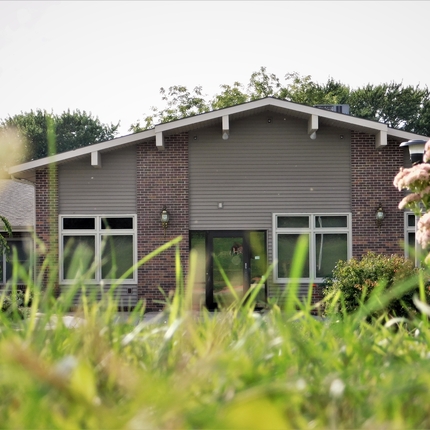By Cody Smith, former staff member
Consistent with the nation, rural Nebraskans are aging at a faster rate than their urban counterparts. Unfortunately, a shifting long-term care system may leave them behind. Over the last decade, 23 long-term care facilities have closed across rural areas of the state. At the same time, 753 beds were lost – indicating a troubling shift for rural Nebraskans whose well-being depends on access to long-term care.
“Rural Nebraska’s shifting long-term care system,” a newly-released white paper, examines the decline of the number of long-term care facilities and beds in rural Nebraska. Other factors that impact rural long-term care facilities, including an aging rural population, health professional shortages, and programs like Medicaid and Medicare are also analyzed.
Nationwide, it is estimated that about 77 percent of nursing home patients are between the ages of 65 and 95 years old, and rural areas of Nebraska have older populations. In 2016, the percentage of the population that was 65 or older living in metropolitan counties was 12.2 percent and 18.5 percent for rural counties; this reveals a 6.3 percent difference. In addition, the top 43 Nebraska counties with the highest 65 and older population were rural counties.
Access to a level of care that meets their unique needs can determine if families remain together, or if their loved ones will have to move miles away. Long-term care facilities are crucial to providing a level of care that many families cannot offer on their own. In rural areas of the state, accessing long-term care is becoming increasingly challenging.
The paper also found 64 of Nebraska’s counties struggle with primary care health professional shortage areas. These professionals, including doctors and registered nurses, play an important role in managing long-term care programs for residents. Of the 64 counties confronting this issue, 57 of them were rural. The shortages will continue to pose a financial burden to providers – impacting rural residents who are making decisions about long-term care.
As Nebraska’s long-term care system continues to shift, Medicaid remains an important ratepayer – covering as many as one in two residents of nursing homes. About 15 percent of the nursing home population is under 65 years old and currently, most are ineligible for Medicaid coverage, even if they’re uninsured. Expanding Medicaid coverage to those earning less than $17,000 annually would lead to improved population health and likely leave providers with less financial stress by reducing uncompensated care expenses.
To learn more, view the paper at cfra.org/publications/ShiftingLongTermCare.





